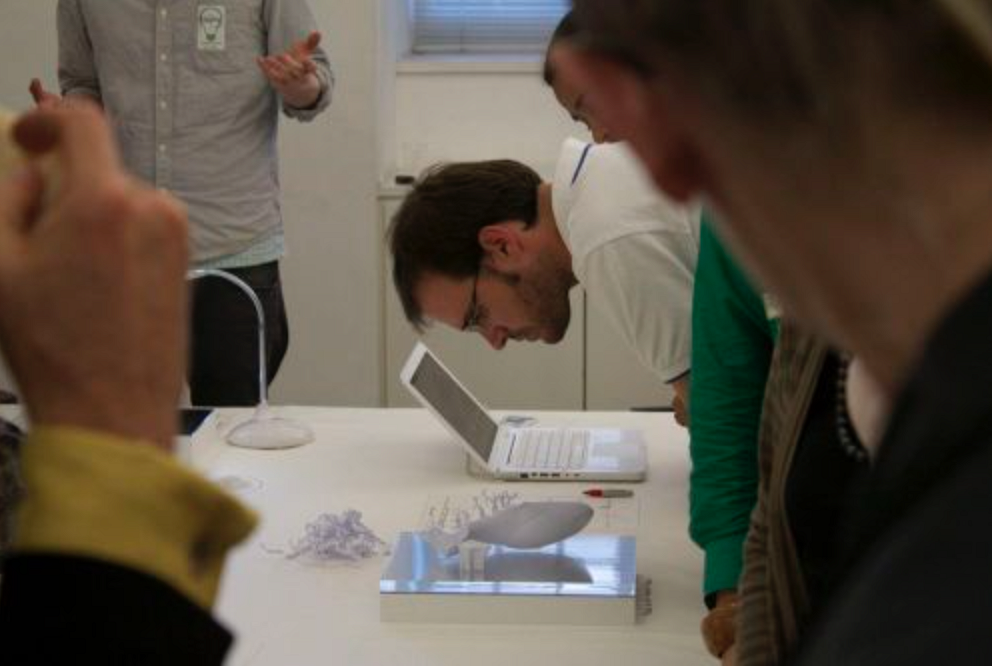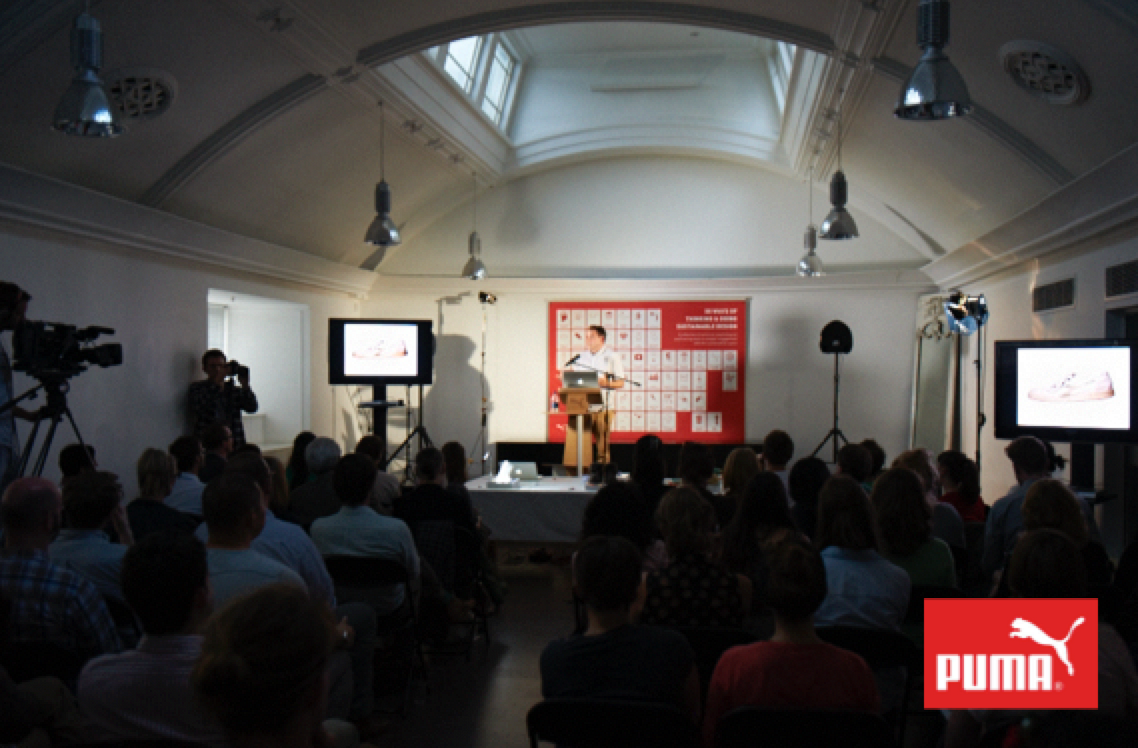Help
Community21 has selected some case study communities and projects to share across the network to inspire and inform others. Should we be featuring yours? If so get in touch.

Nick Gant and Tanya Dean have sustained a 10 year research agenda regarding the role, value and agency that materials, in particular waste materials, have within social and sustainable development.
Waste is a result of how we feel and think as well what we do (Gant 2015) therefore we need to understand how we can elevate the value of waste socially and culturally as much as how we manage it physically.
The 'Sole-Searching' project uses pairs of shoes made of many types of waste material to research the way we 'think and feel' about waste materials as well as how we can use them. Understanding how as society we assign value to waste is arguably the key to preventing it. Some of them would be considered unorthodox using dog hair, breast milk and oceanic plastics etc - but each material, the associated relationship to its user and the role of making with the material interact to provide frameworks for elevating the value of waste through a process of meaning-making.
This research has been presented at a number of international research conferences and by invitation to industry, including as part of sports and lifestyle brand PUMA's Sustainable Design Collective and in features for trend forecasters such as WGSN, Franklin and Till, and Fashion Futures.
Through this and related projects Gant has developed have Valorisation Framework (Gant 2016) that develops clear, tested strategies for we creatively elevate the value of waste (valorisation) for more sustainable consumer cultures and 'virtuous' circular economies.
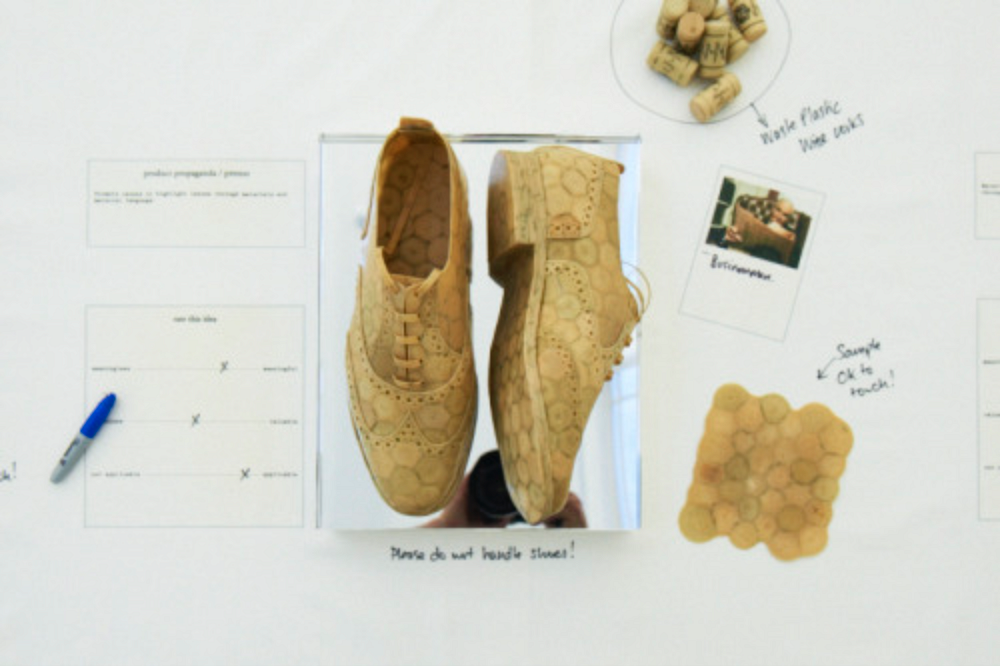
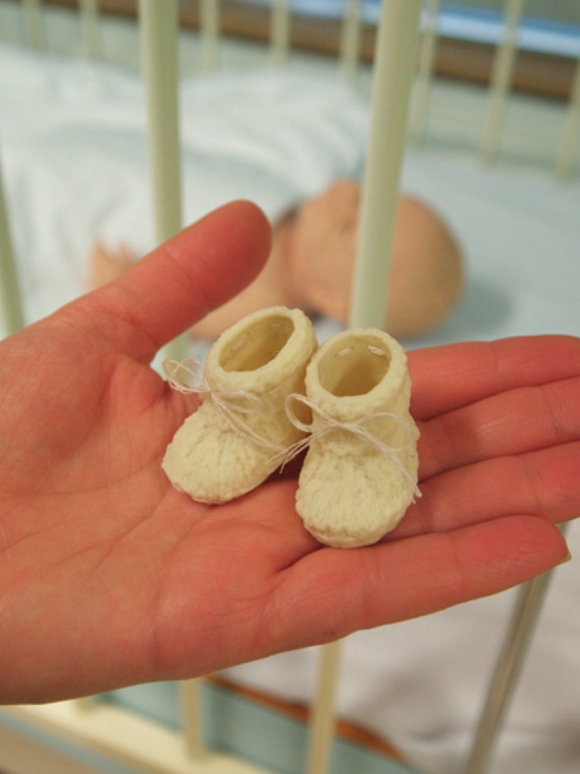

These baby bootees are made from breast milk casein (an early form of plastic) and were commissioned by The NHS / UK Milk Bank to celebrate and promotes international breast milk donor-ship day established in 2013. The shoe story explores how an international network of willing volunteers collect otherwise waste milk from lactating mothers. They distribute this to literally save the lives of premature and sick babies whose mothers are unable to feed them or who have fallen ill or died in childbirth.
An emergent aspects of this process was that we were then asked to create bootees by mothers who had lost their children during childbirth – their milk being a material of direct connection to that time, their baby and the loss.
Having featured in dozens of press features in countries across the world including The Mail and New York Times the nature of the objects themselves challenge our preconceptions and appreciation of objects made from human material. Equally they demonstrate the power of material provocation in life saving recycling.
Valorisation Framework
Memorial – In this case the material is an extreme, direct association with the time of birth and the passing of a life, but it may be recycled material that was used by someone with which the re-user has a personal connection.
Taboo / provocation – the material is polemical, perhaps because of its unorthodox nature or the incongruous reapplication when normally associated with particular rituals, cultural or religious ceremonies. The material may be seen as unpleasant or weird and this provokes a reaction.
Having featured in press in countries right across the world including The Mail and New York Times online the nature of the objects themselves challenge our preconceptions and appreciation of objects made from human material. Equally they demonstrate the power of material propaganda and provocation in life saving recycling. The projects explored different examples of uses of ‘challenging’ materials such as Victorian bios d’urcy in memorial jewellery and how contemporary makers are reimagining other early plastics made from substances, such as human hair.
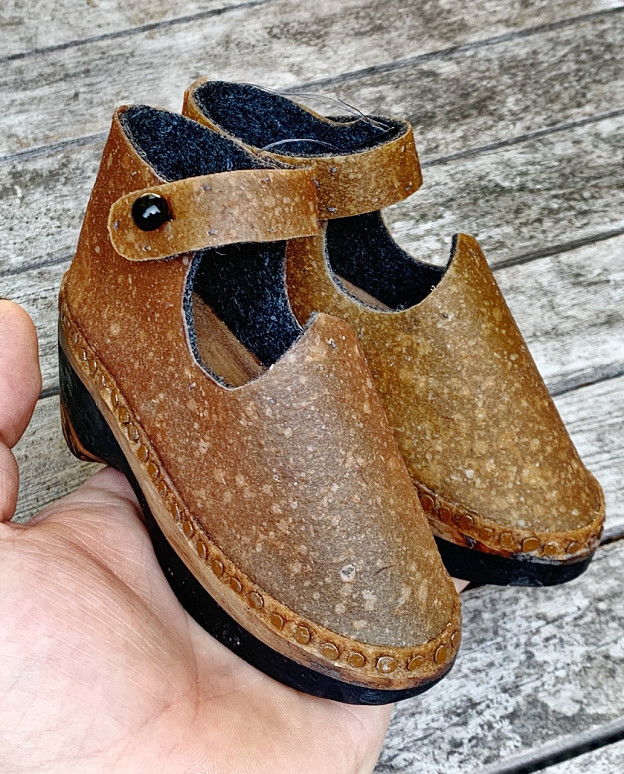
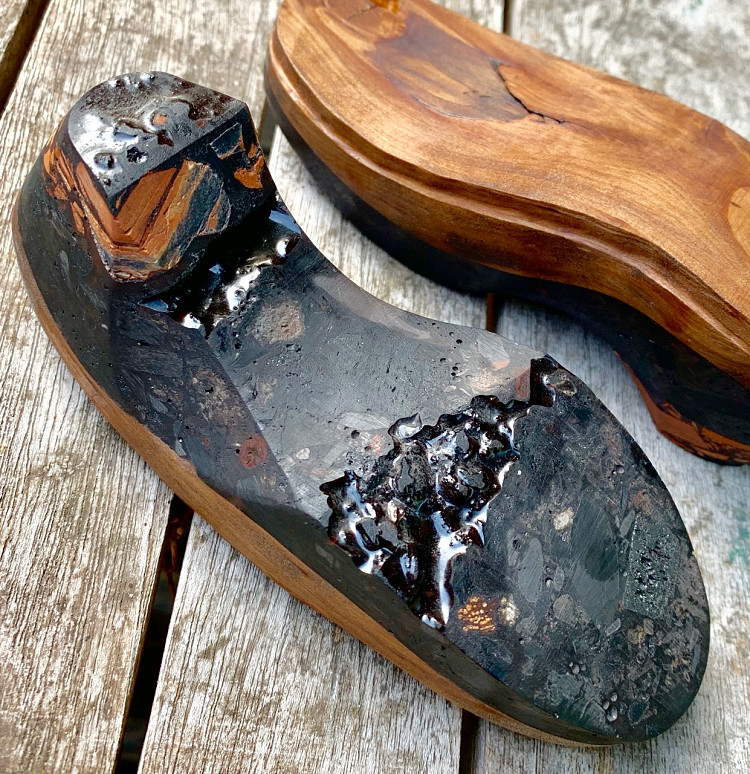
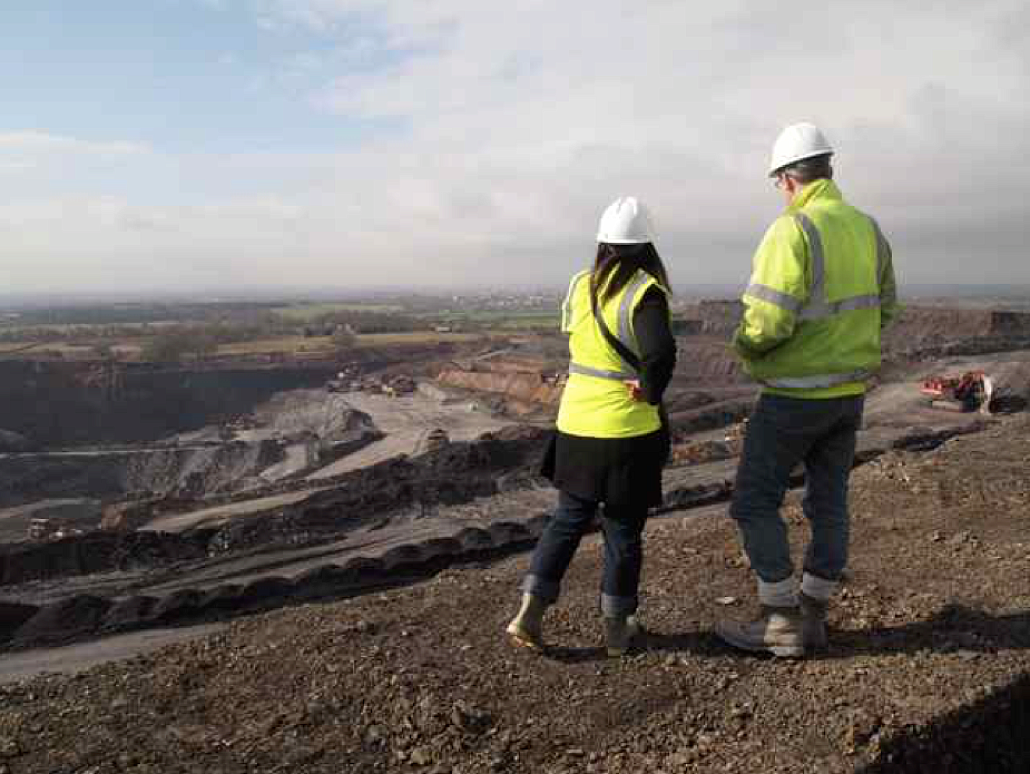
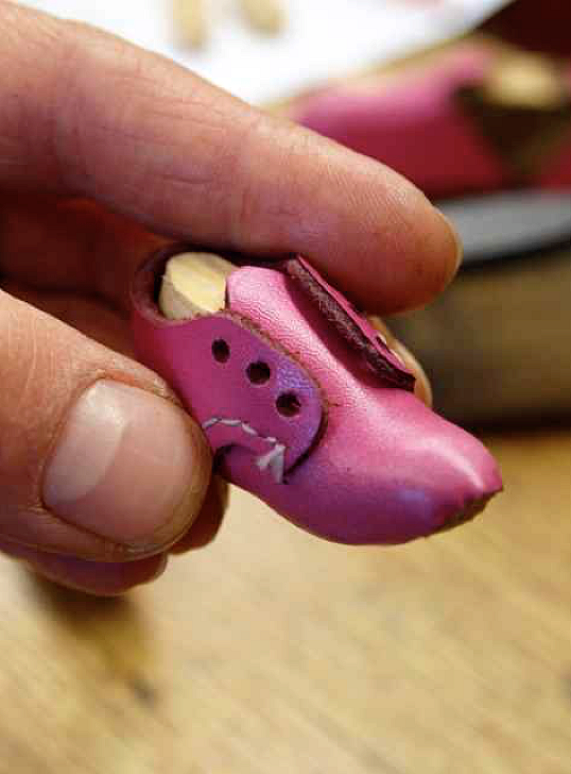
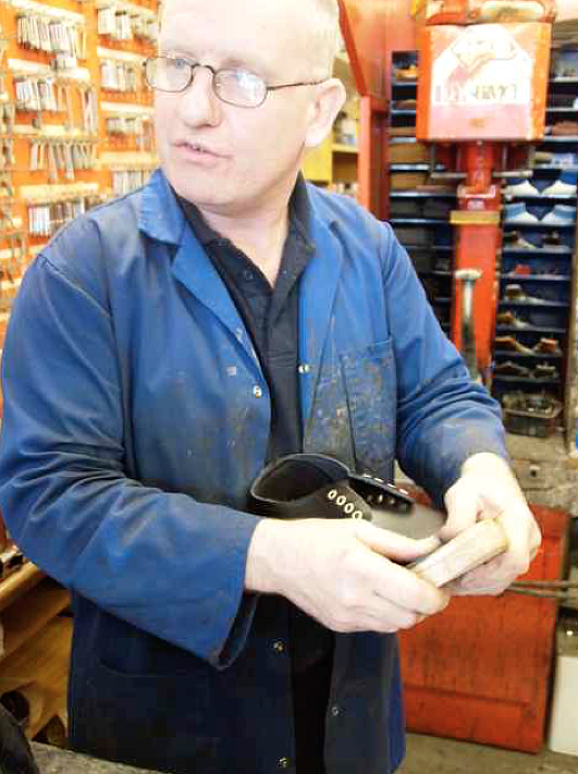

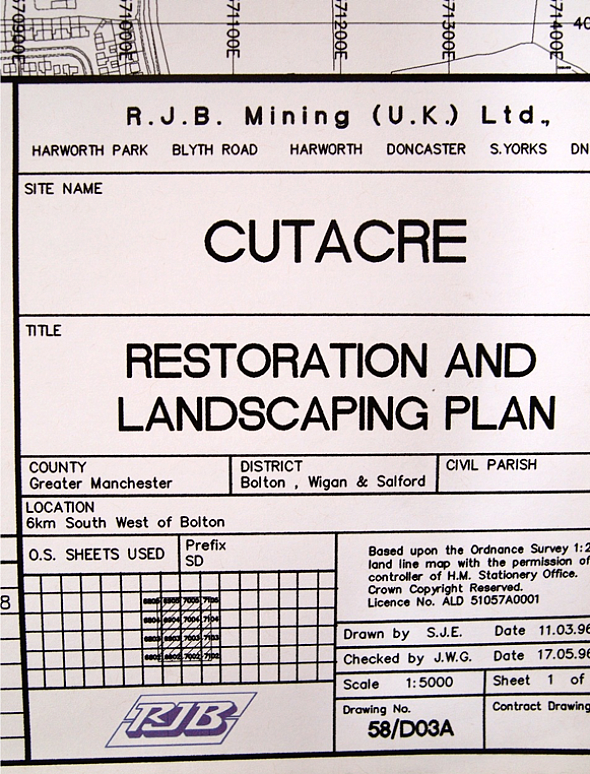

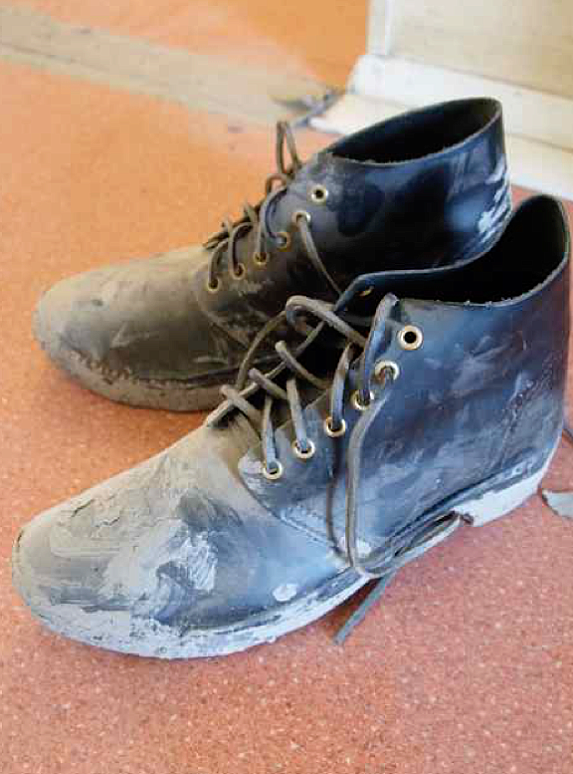
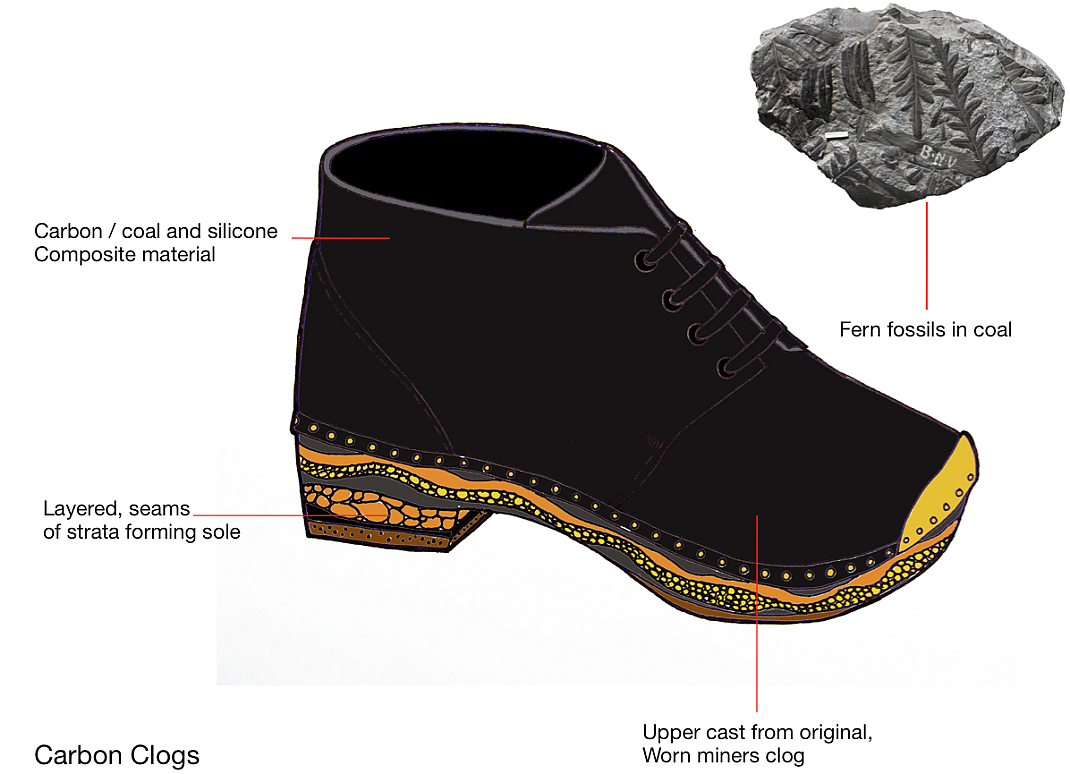

Materials: Applewood and apple leather Lancashire coal miners typically wore clogs and their small size acknowledges a time when children were deployed in coal mining in UK, enabling access to smaller spaces. They are created from applewood and apple leather - This references the phenomena where the miners threw their apple and pear cores in the wagons carrying waste coal to giant ‘gob’ heaps where new orchards have emerged and colonised the mountains of industrial waste.
These shoes symbolise the shifting landscape of use and valuation of (waste) material resources and their social, cultural and environmental impact. The clogs track the transition of large parts of the Lancashire landscape from open cast coal mines, servicing international economies and employing whole communities to new environments for nature and recreation. The geological scars of a giant carbon economy have been literally carpeted over and replaced by peaceful-poignant-places promoting nature, carbon capture and new community amenity. The politics and narrative of the land continue to change along with our relationship to these (waste) materials and places. Now new industrial uses are being considered for the waste coal buried beneath what have become much-loved natural habitats and community assets. Communities once decimated by the loss of industry now defend their new environments, natural heritage and historic legacy.
Valorisation Framework:
Heritage – The materials have historic, cultural significance and worth, which can be re-made and re-composed as a nostalgic connection to time and place.
Locality - The provenance of the material has cultural significance and value relative to place.
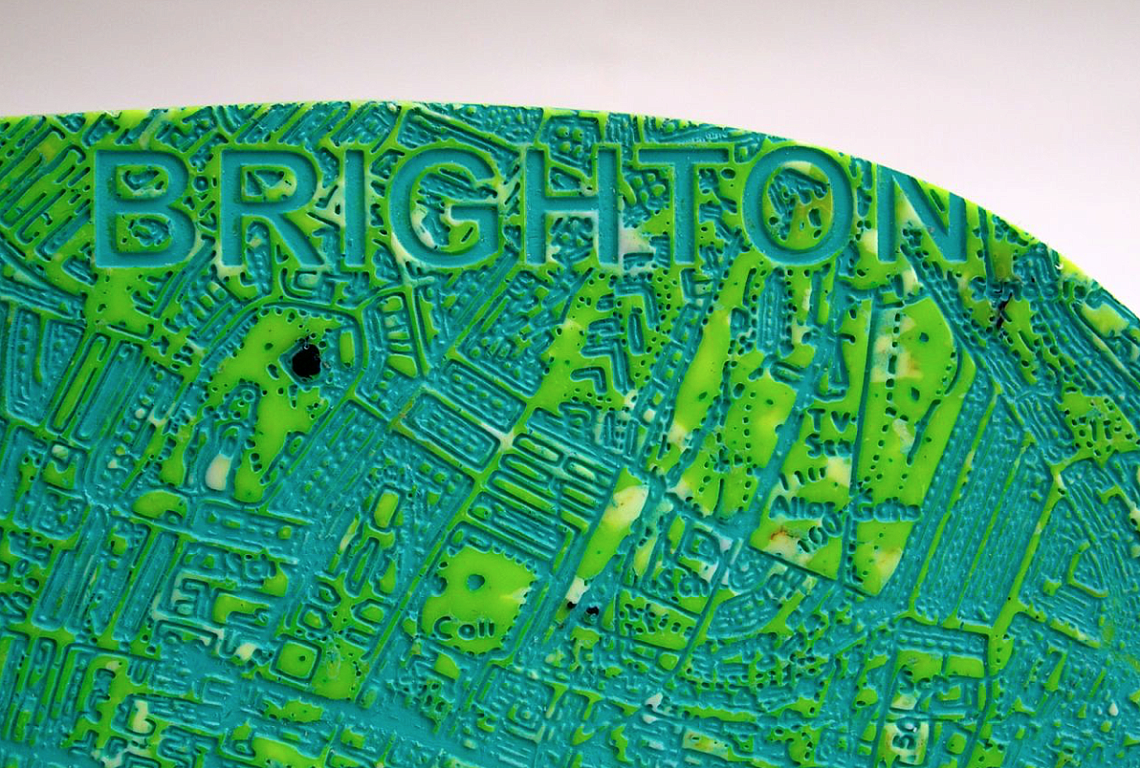
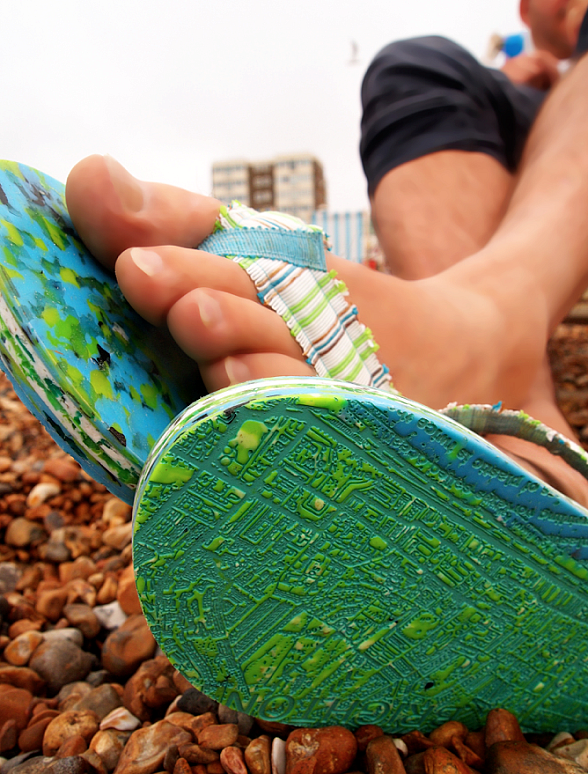
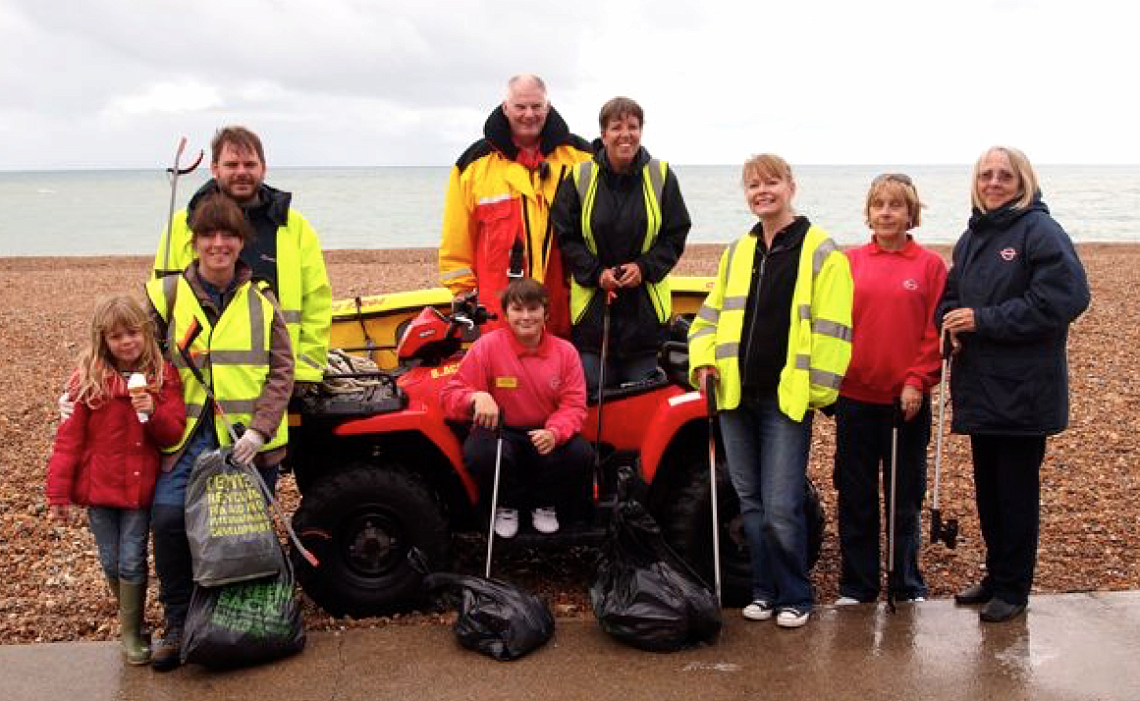

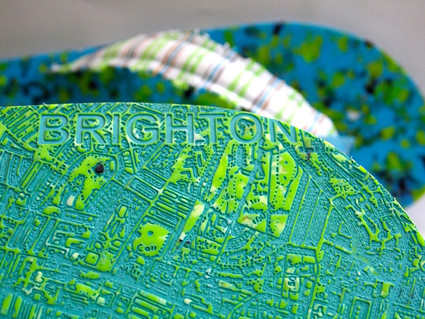
This story explores a revised appreciation and care for the environment in which we live. These shoes are flip-flops made from plastic beach waste collected by volunteers who scour their local beaches as part of the Marine Conservation Society’s annual beach clean up events. First Initiated in 2010 the materials are collected and heat pressed into new shoes as a reward and memento of the event. The physical act of 'careful' collection and production of this social-souvenir elevates the value and cultural significance and identity of the waste. It also helps to extend the lifespan of the object through its emotional attachment.
Like all the Sole Searching stories the shoe stories form a gateway to wider narratives - In this case how our mismanagement of materials has led to phenomena such as giant gyres of oceanic rubbish the size of countries floating out at sea and new geological formations that are actually part rock and part plastic, giving us a glimpse of the future anthropocene era.


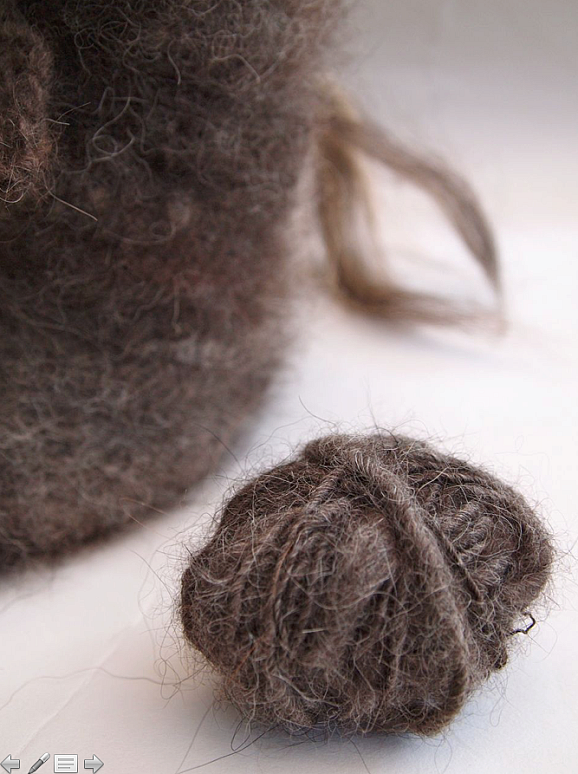
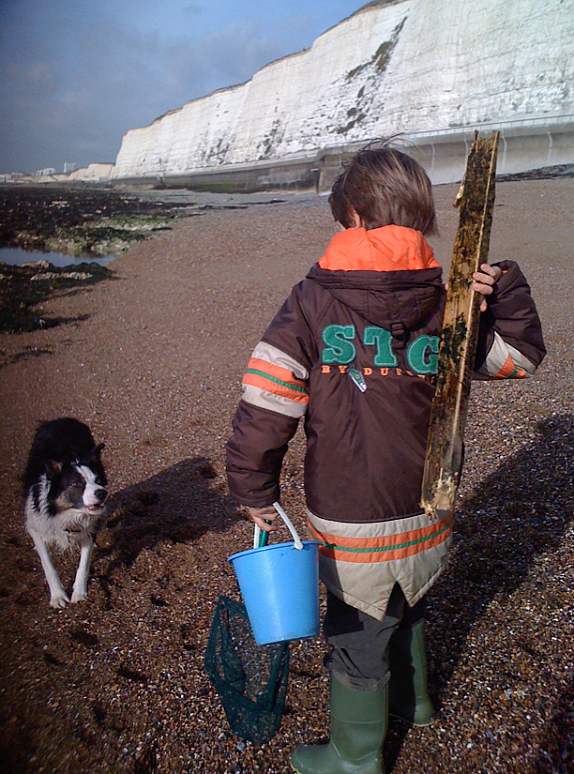
Materials: Dog hair and brass Psychologists and social scientists agree that pet ownership has a proven positive effect on human well-being, to the point where dog ownership can actually be a prescribed therapy for people who have suffered trauma or very challenging personal, social circumstances their life. Dog ownership in children is proven to impact on their capacity for empathy, nurturing and sustaining relationships.
Through a pair of child’s slippers knitted from traditionally spun dog hair, we explore our emotional connection to our pets and how this manifests and transferred through the materiality of the hair.
Valorisation Framework:
Care – associations and connections are accrued and ‘made’ through interaction with the material as part of an emotional relationship. In this case through directly using the materials from a pet, but equally it could be materials associated with the care for a ‘loved-one’. When re-made the materials embody and sustain this emotional relationship.
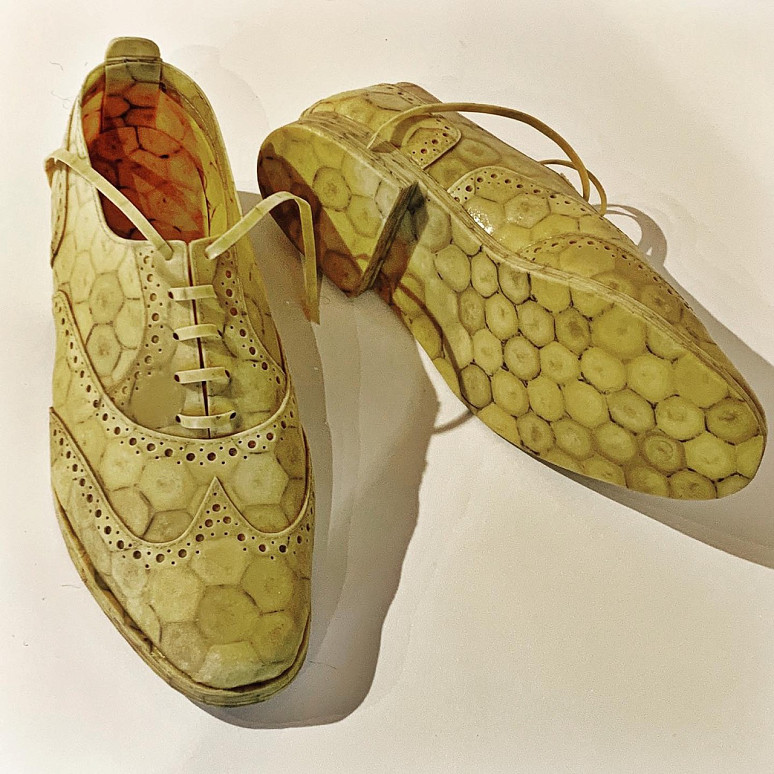
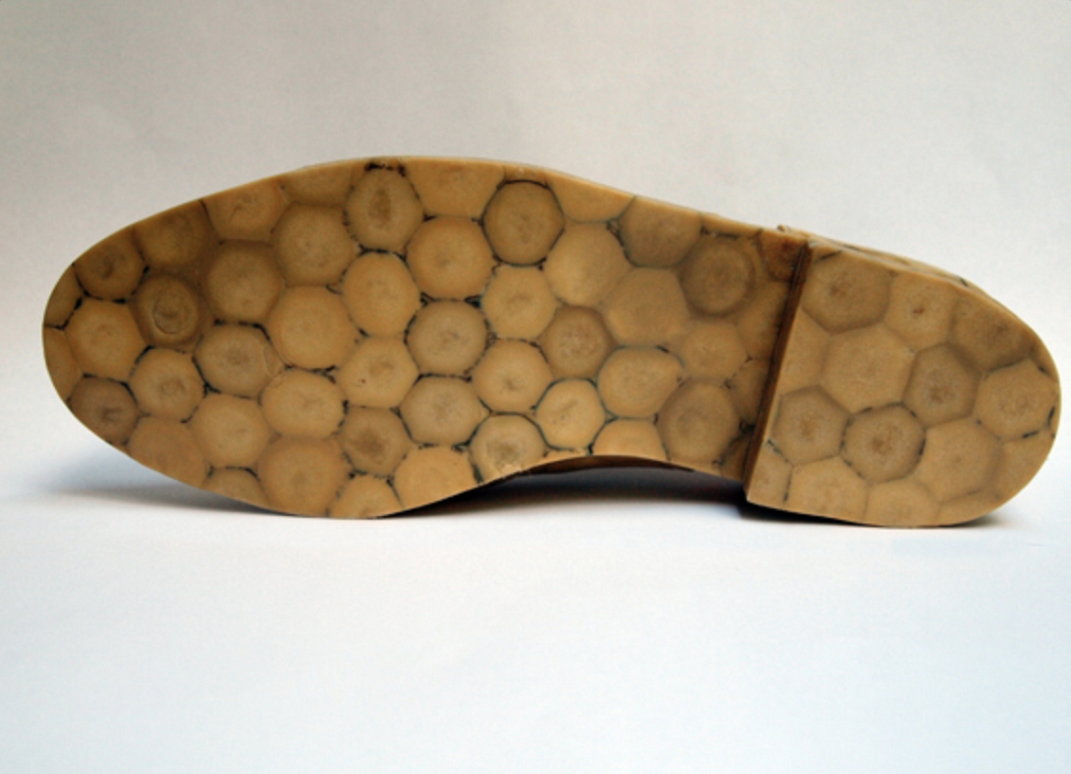
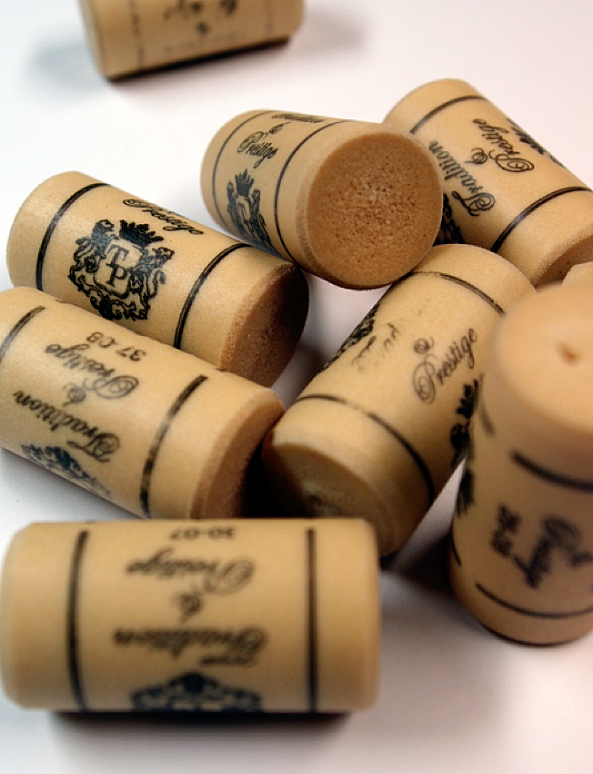

Materials: Synthetic Corks Synthetic, single use corks have evolved because of the capitalist mantras of ‘cost reduction’ and ‘the customer is always right’. Consumer perception has sustained the illusion that natural corks are the cause of ‘corked’ wine - a term describing tainted, unpalatable wine. Evidence demonstrates that this more occurs from a range of situations and is actually often a consequence of pollutants and pesticides in the environment. Unfortunately, a lack of consumer awareness and consumer demand for ever-cheaper wine is dramatically undermining one of the best examples of man and nature in sustainable symbiosis – the farming of natural cork from the world’s cork oak forests.
These faux corks are fabricated, from high-density polyethylene (HDPE), an oil derivative that is extruded and ‘foamed’ to actually try and emulate its natural rival. In these changing times, where the price of oil can rise ten-fold in a matter of months and the environmental consequences of pursuing these minerals is under understandable scrutiny – does this synthetic, single use plastic imposter really ‘cost less’? The ‘faux’ brogues symbolise the fictions that we perpetuate through misperception and the cynical ‘business’ of materials. Conversely, cork oak forests provide unique habitats for many rare species, including the world’s most endangered cat, the Iberian Lynx and large, sustainable farming communities are also losing their livelihood.
These shoes are the first we made in 2009. From the process of re-making emerged a conception that the objects could become ‘critical’ through the act of re-making. Thus helping to establish the ‘Sole-Searching’ method. In this instance the aesthetic that materialised also resembled reptile, skin - therefore reminiscent of plastic materials that serve as alternatives to the rare fur or skin trades. This story’s double-sided nature is reflective of the quandary of our use of and demonization of plastics as a material when it serves many useful and critical purposes in society and culture and even nature.
Valorisation Framework:
Serendipity - ‘happy accidents’ can emerge through the re-making process that can indicate new material properties or meanings that were not predicted. Despite this not being a predetermined strategic process or even a random outcome, once they have been identified the processes that resulted in these instances can be repeated. This may result in unique valuable new aesthetics.
Re-formation - the reversal of what might be considered a ‘bad’ material when reused to deliberately highlight the importance of maximising re-use, particularly of contentious materials. The material forming part of a protest or propaganda that seeks to highlight a cause or particular point of view.
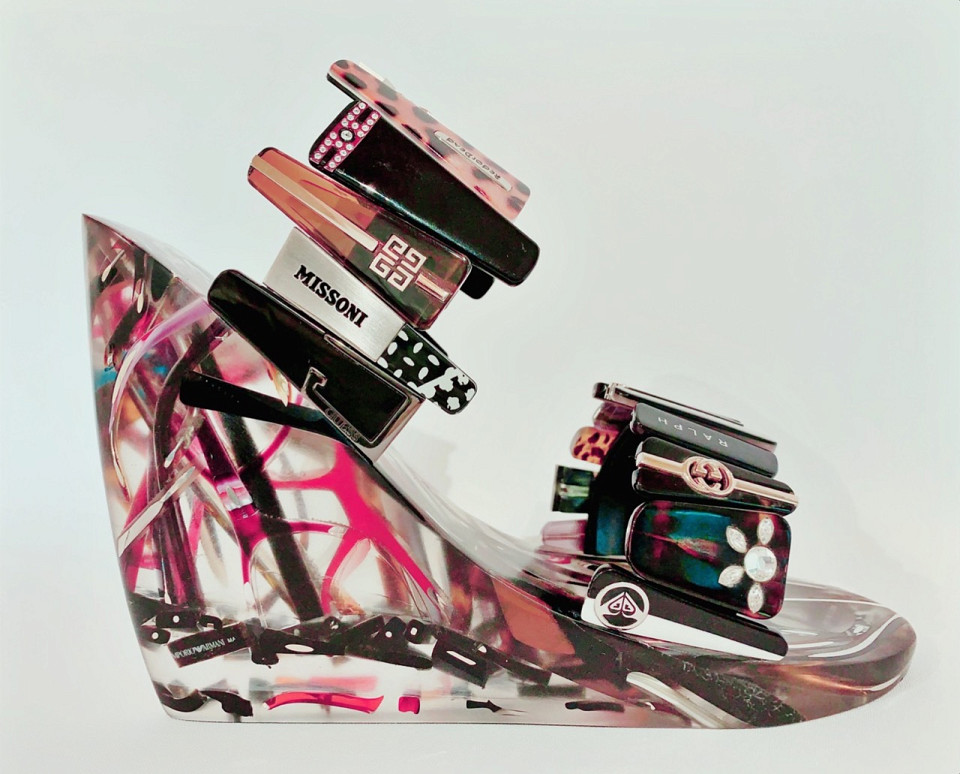
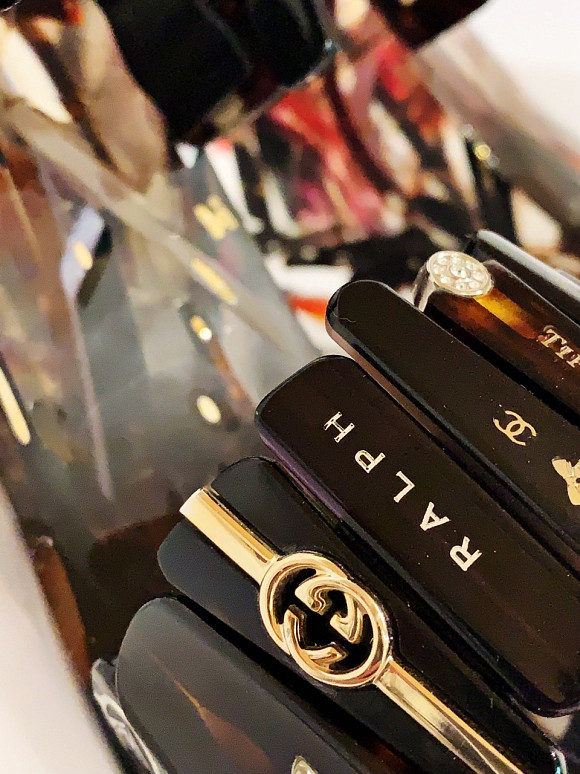
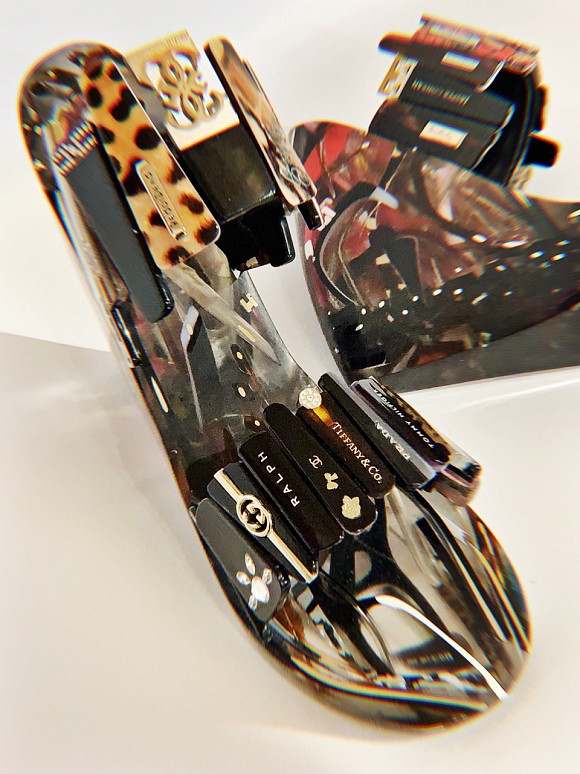
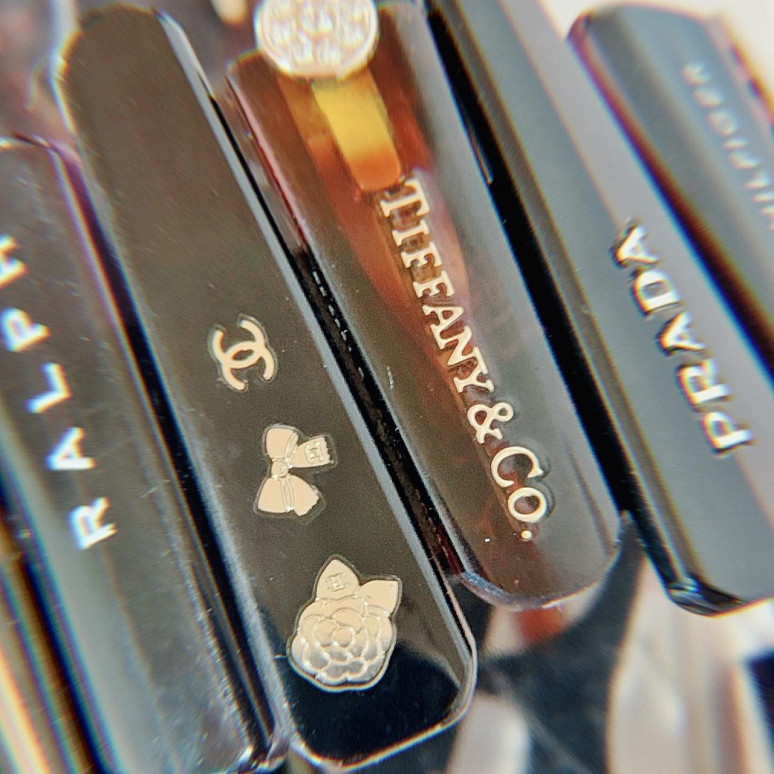
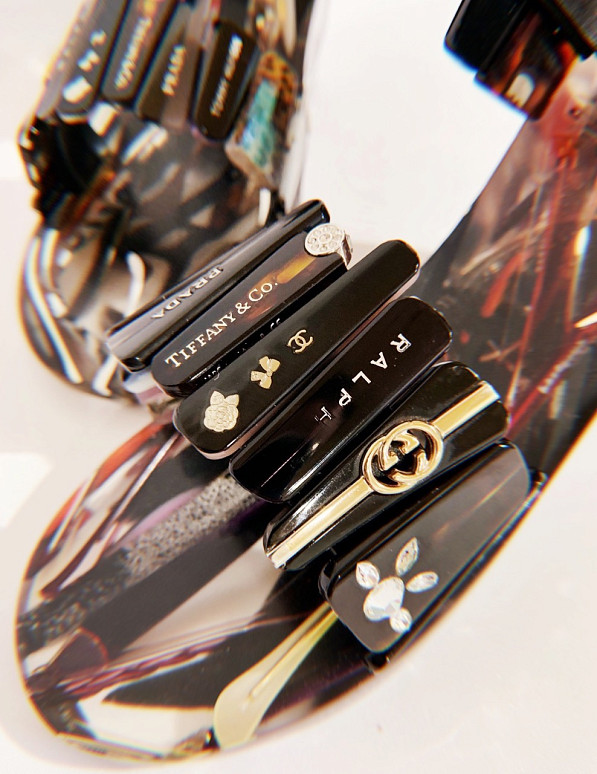
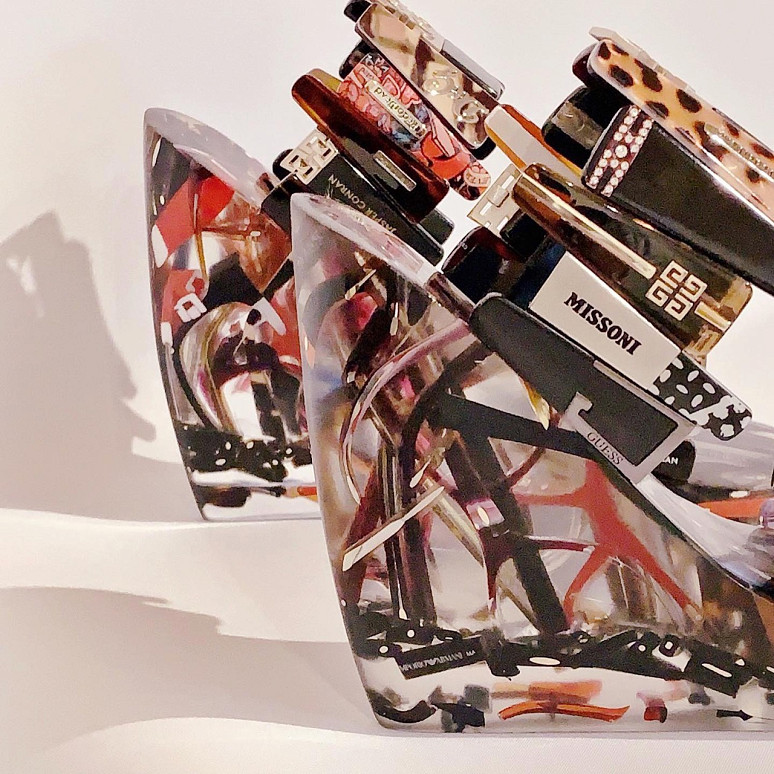
Materials: Recycled spectacles (in pine sap bioresin) These shoes present our contrasting perceptions of value of within different material cultures. Despite the premium paid for ‘designer’ spectacles, in the UK we throw away hundreds of thousands of branded glasses every week. Certain charities have been receiving and recycling them and providing essential Vision Aid for people in developing countries. A stark contrast emerges between the apparent fickle-nature-of-fashion in one context to the fundamental provision of sight in another. However in researching this story we also report on the changing politics and perception of recycling - where some countries are now rejecting this kind of aid, not wanting to be associated with the acceptance or stigma of inferior or second-hand goods as aspiring economies.
Valorisation Framework: Re-branding - through the conscious re-use of established, recognisable brands the maker re-presents the ephemeral meaning and / or values associated with that brand or brands. Re-making can re-mix or re-compose new meanings in playful or provocative ways.
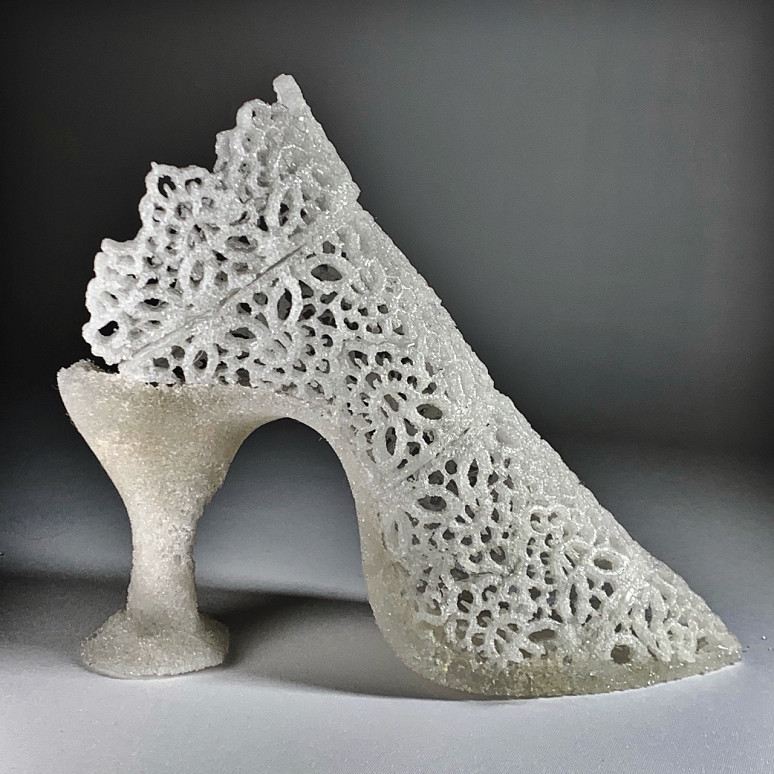

Material Pat-de-mere –glass from broken champagne flutes from weddings Glass is collected from broken champagne flutes gathered at weddings and recast into a crushed glass form. This shoe introduces the notion of how undervalued waste or industrial can be re-made enhancing and elevating its inherent or latent qualities. In this case the glass demonstrates how a modest, everyday and industrial waste material can become ‘beautiful’ and can enrich products with enhanced meaning and value.
Valorisation Framework:
Memento – material re-applied from a significant occasion carries an inherent connection and significance to that event.
Latent aesthetics – re-making can reveal, enhance and develop the inherent aesthetic potential of the waste material re-presenting as a material of beauty and value.

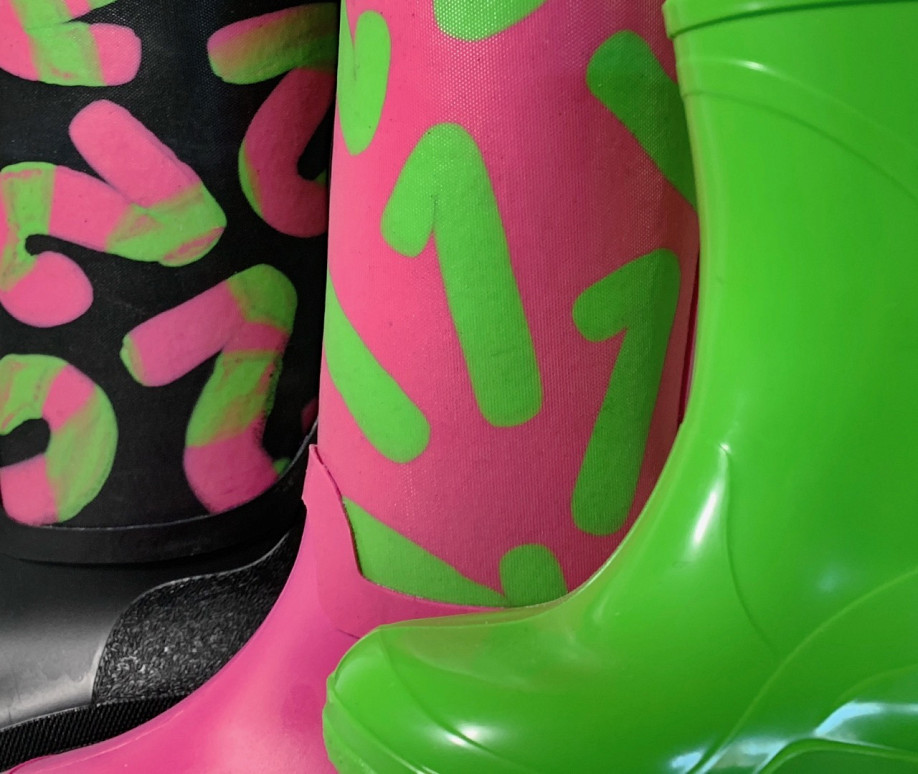

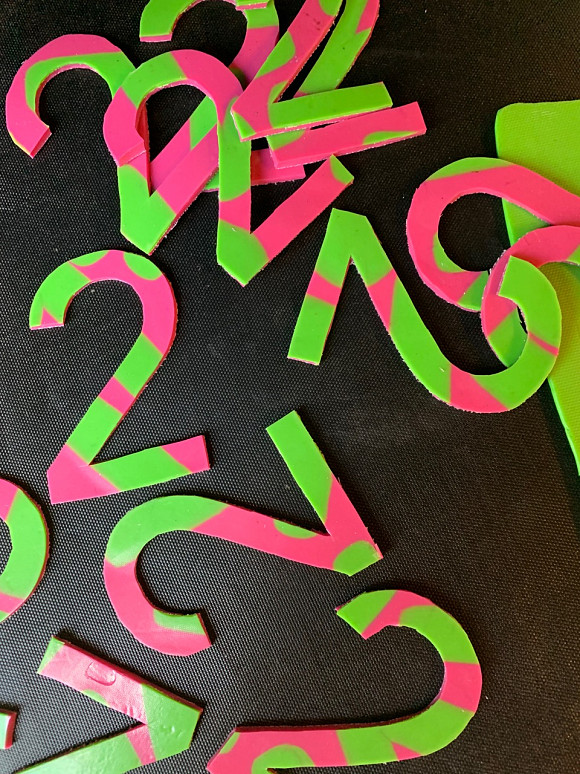

A mother or father’s wellington boot is constructed from a composite of their children’s cast offs or a user may accrue materials and reinvest them into new objects by retaining the material and passing it from one object to another when they grow. In either instance meaning is established through transition and change of the materials through time, use and association. By recycling one product into another we carry the pedigree of the material and its genus through to the next generation of object. ** Valorisation framework:**
Genealogy - Consumers can identify the recycled materials and visually track how many times the materials have been reformed – this can help consumer choice through easily identifiable visual coding. Also attachments can be formed through the transition of objects over time; they gather meaning and value through their association with use in life, which in-turn may extend the lifespan of the product.
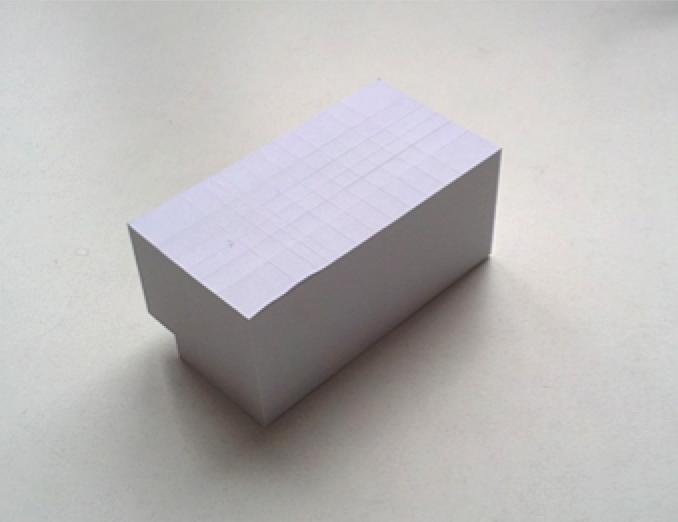
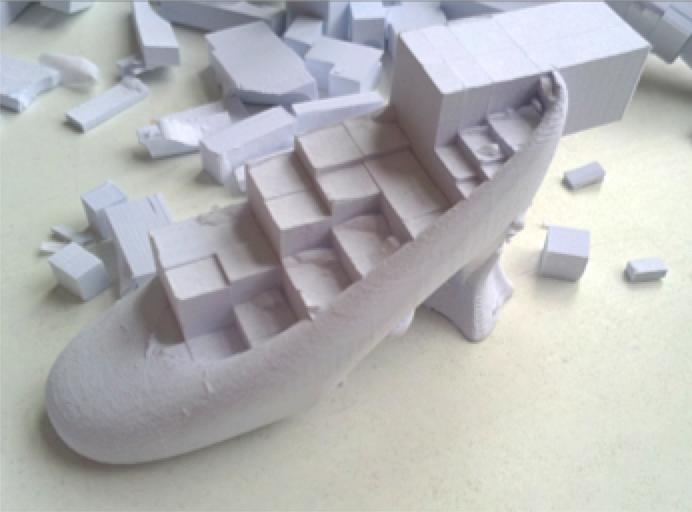
With the advent of personal computers we were promised a new era of the paperless office – in fact the opposite has transpired and we now consume more paper than ever before. In fact the average US citizen consumes 5.4 trees per year - we are all publishers now! The Secretary Slippers are made using a type of 3D printer, using recycled sheets of office paper. Blocks of discarded boardroom papers are layered one sheet at a time, glued and cut into shape and slowly the shoes are literally grown from a digital form. The chapter will explore our continuing and evolving relationship with paper, which like the ‘bubble perm’, we were meant to leave behind in the eighties! Paper is a huge economy, which sits as a metaphor at the very forefront of our understanding of the-sustainability-conundrum and cycles of demand and consumption in a new digital epoch.


